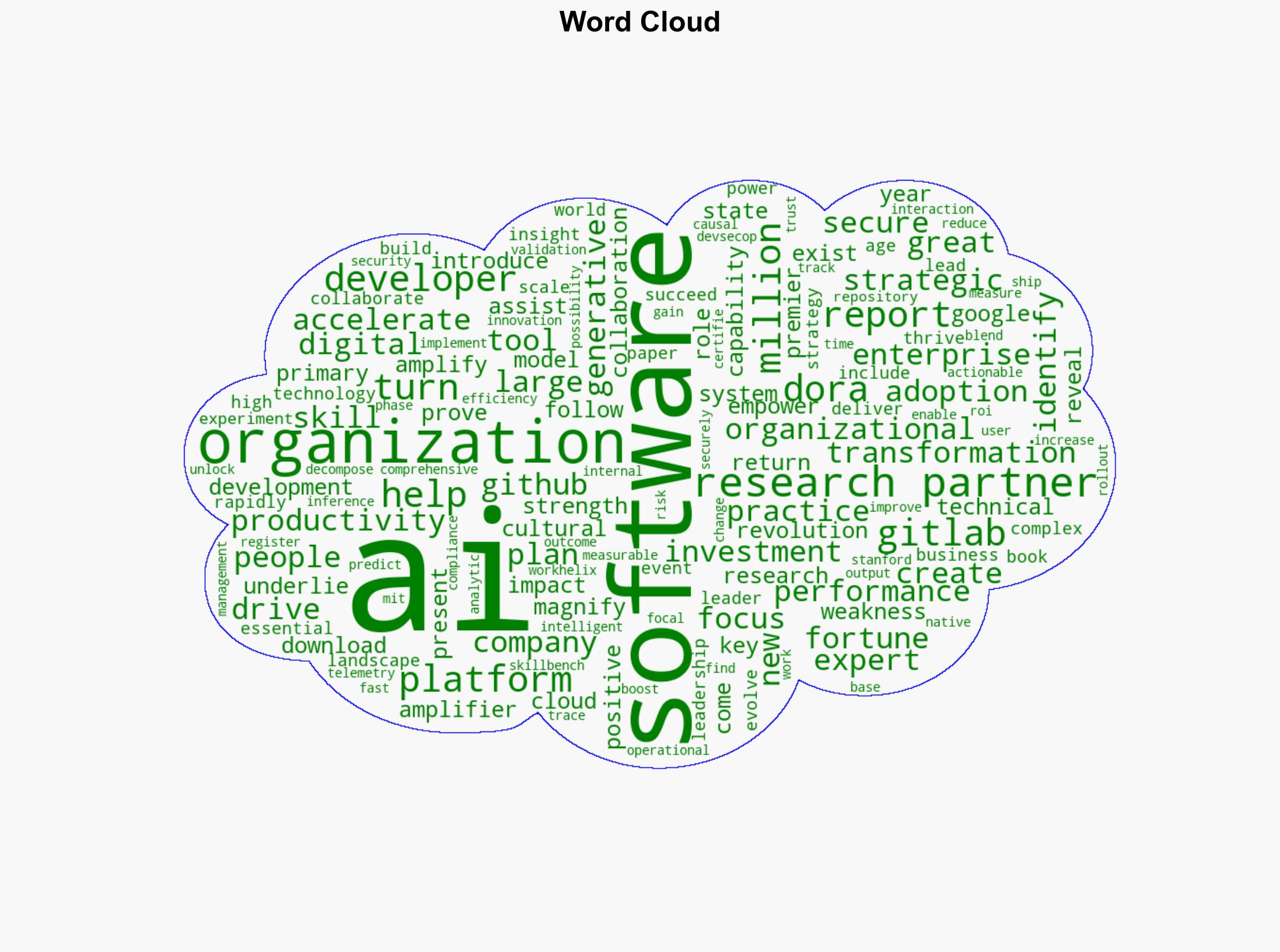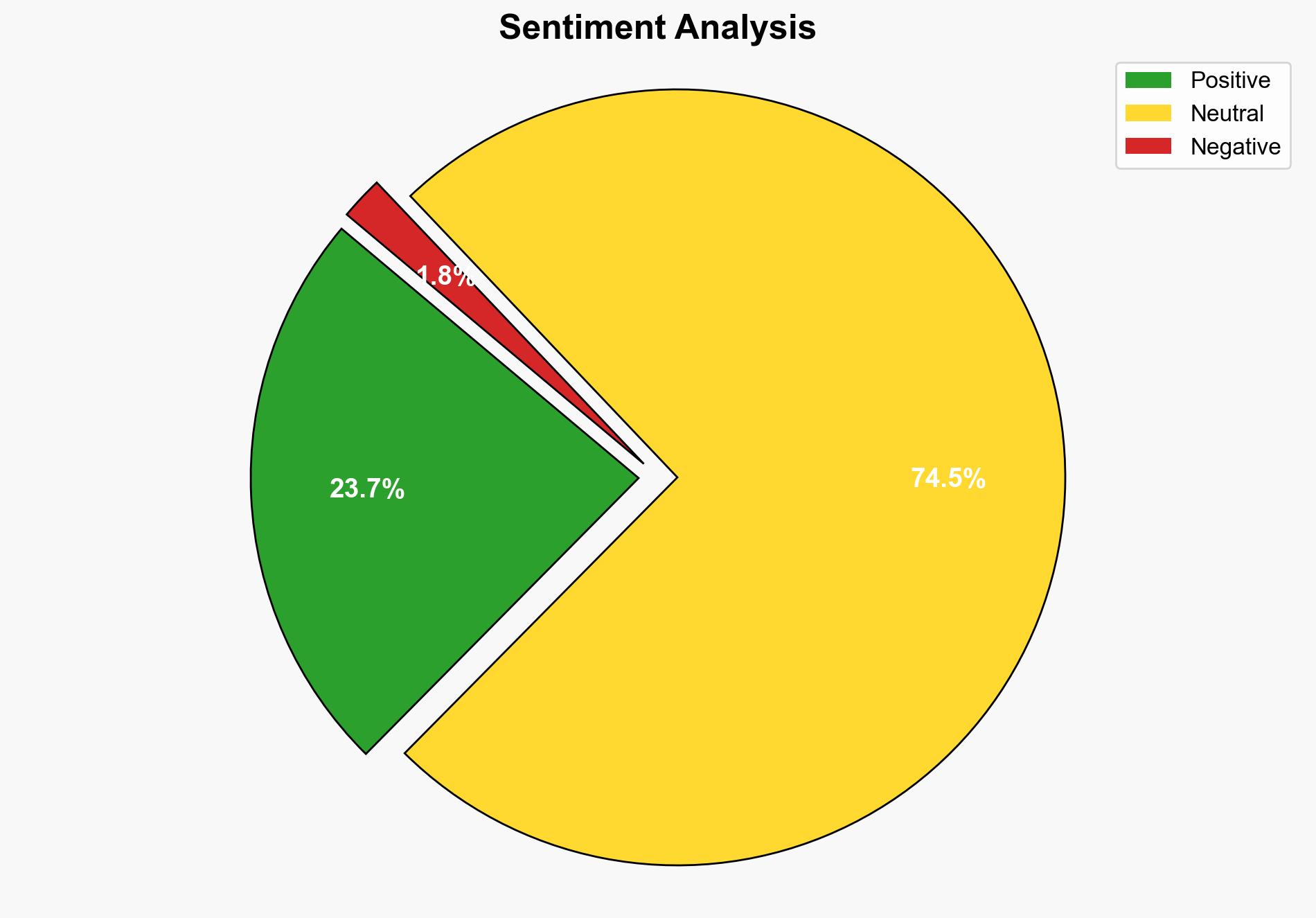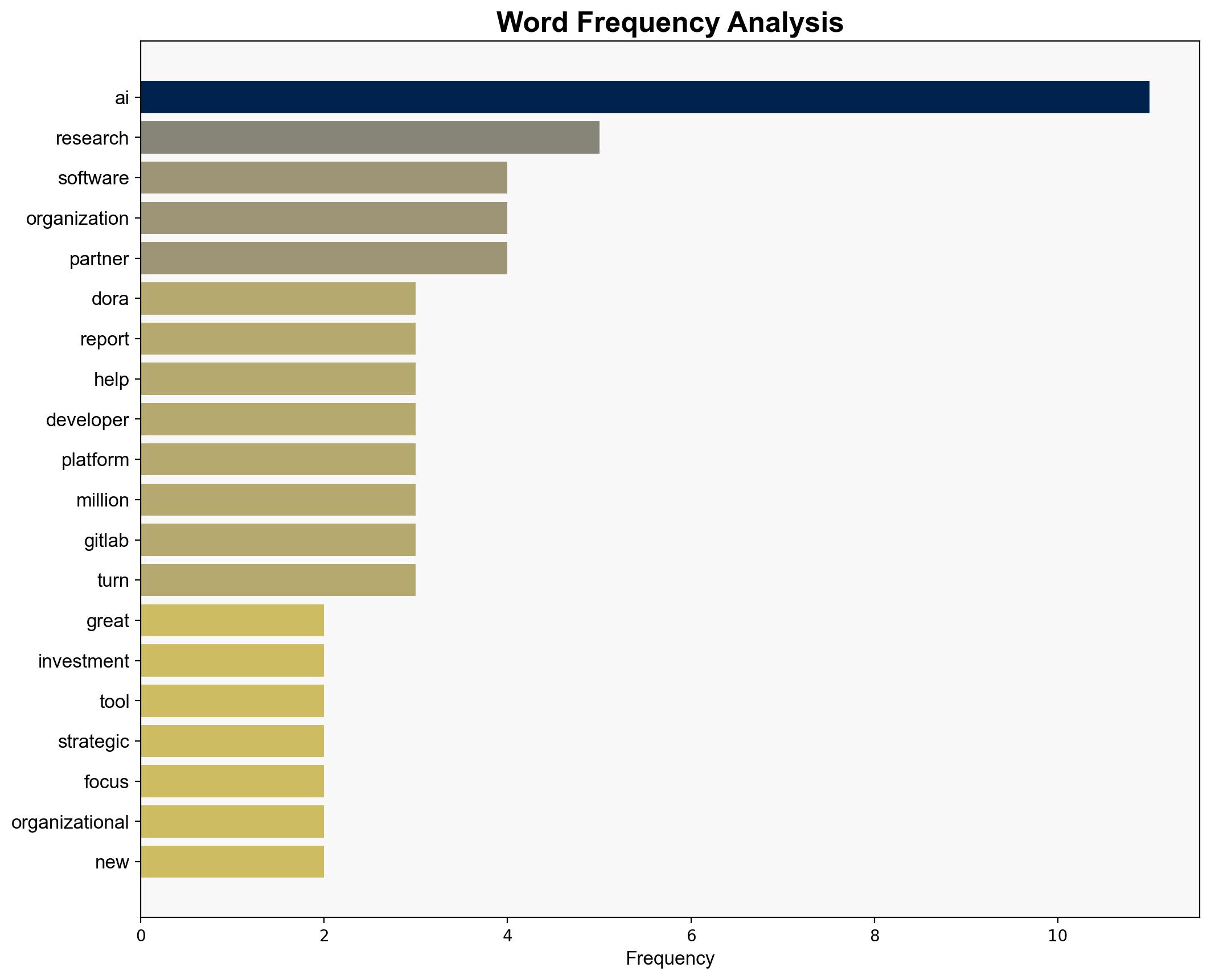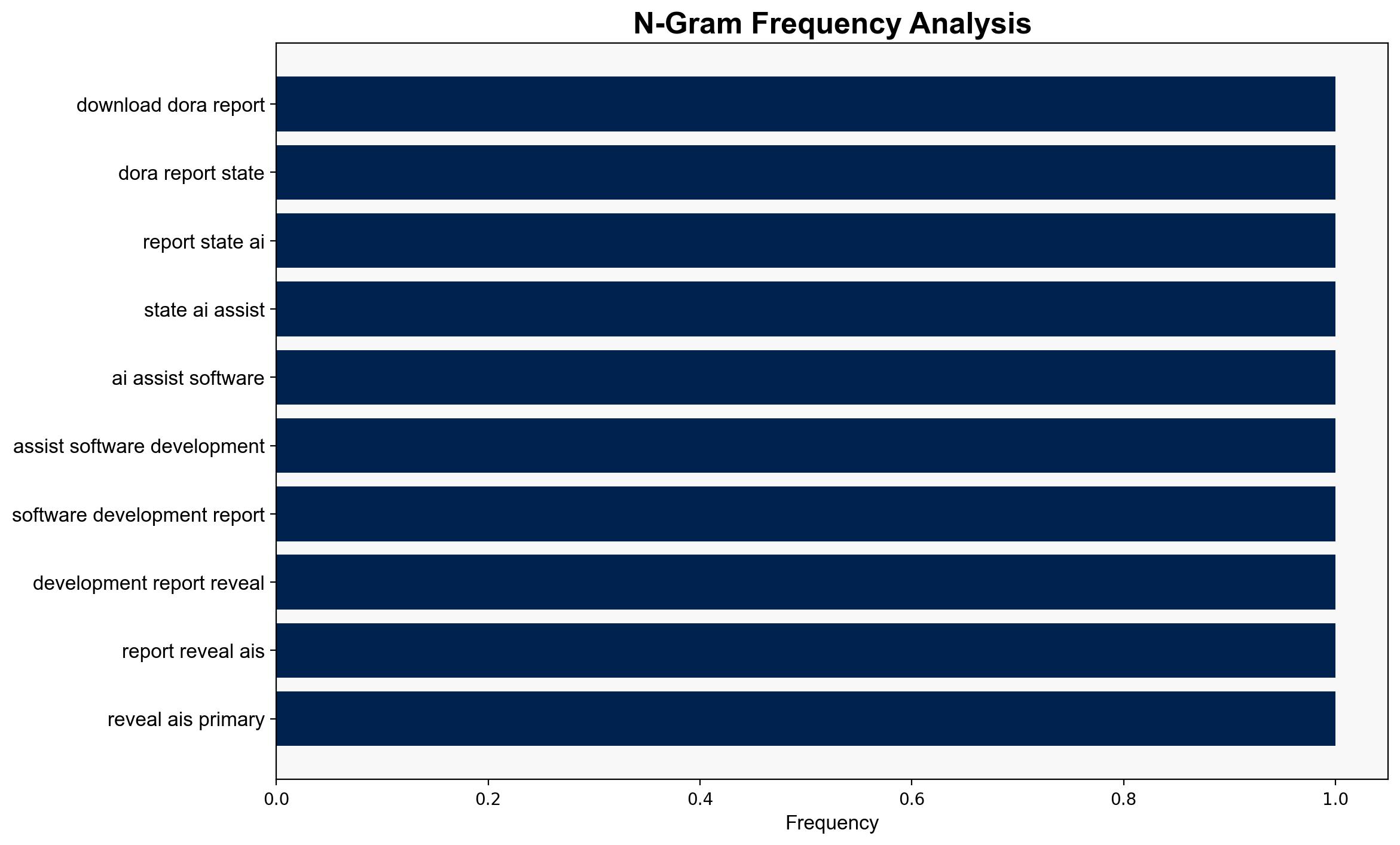DORA State of AI-assisted Software Development 2025 – Dora.dev
Published on: 2025-10-08
Intelligence Report: DORA State of AI-assisted Software Development 2025 – Dora.dev
1. BLUF (Bottom Line Up Front)
The most supported hypothesis is that AI’s role as an amplifier in software development will significantly enhance organizational strengths and expose weaknesses, leading to a strategic realignment in the tech industry. Confidence level: Moderate. Recommended action: Organizations should focus on integrating AI strategically to maximize strengths and address weaknesses.
2. Competing Hypotheses
Hypothesis 1: AI will primarily act as an amplifier in software development, enhancing existing organizational strengths and weaknesses, leading to a significant return on investment for those with a strategic focus.
Hypothesis 2: AI’s role in software development will be limited by cultural and technical barriers, resulting in uneven adoption and minimal impact on organizational performance.
Using ACH 2.0, Hypothesis 1 is better supported due to the emphasis on AI’s potential to amplify organizational capabilities and the introduction of the DORA AI Capability Model, which identifies key practices that enhance AI’s impact.
3. Key Assumptions and Red Flags
Key assumptions include the belief that AI can effectively amplify organizational strengths and that organizations are prepared to adopt AI strategically. Red flags include potential overestimation of AI’s impact and underestimation of cultural resistance. There is a lack of specific data on how organizations plan to overcome these barriers.
4. Implications and Strategic Risks
If AI amplifies existing strengths and weaknesses, organizations with robust systems will thrive, while those with significant weaknesses may face increased challenges. This could lead to a widening gap between tech leaders and laggards, impacting competitive dynamics. Cybersecurity risks may also increase as AI systems become more integral to operations.
5. Recommendations and Outlook
- Organizations should conduct a thorough assessment of their current strengths and weaknesses to strategically integrate AI.
- Invest in cultural change management to facilitate AI adoption.
- Scenario-based projections:
- Best-case: AI integration leads to significant productivity gains and competitive advantage.
- Worst-case: Cultural resistance and technical barriers limit AI’s impact, resulting in wasted investments.
- Most likely: Gradual improvement in performance as organizations adapt to AI’s capabilities.
6. Key Individuals and Entities
Entities involved include Google Cloud, GitHub, GitLab, Skillbench, and Workhelix. These organizations are pivotal in driving AI adoption and innovation in software development.
7. Thematic Tags
national security threats, cybersecurity, counter-terrorism, regional focus





